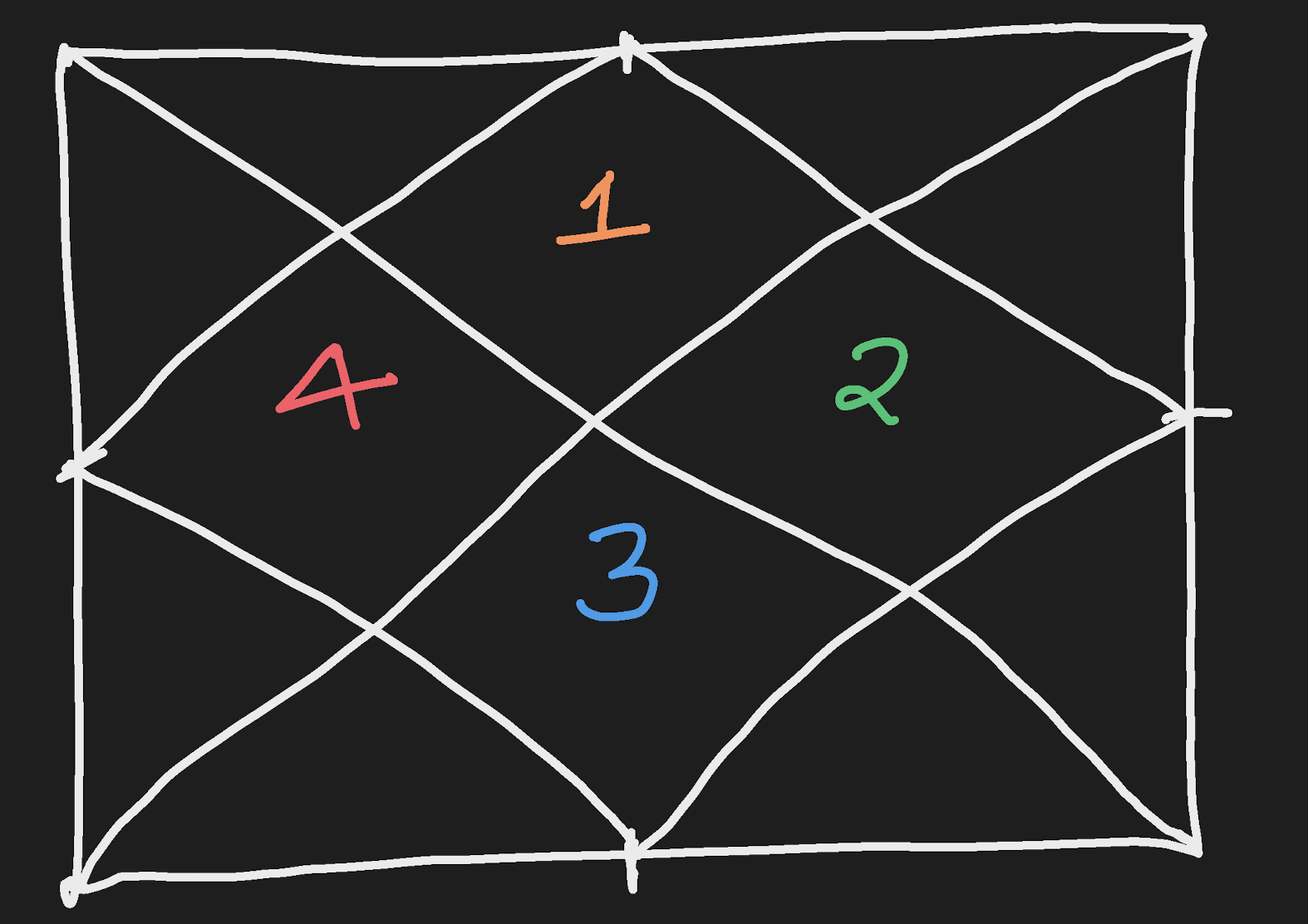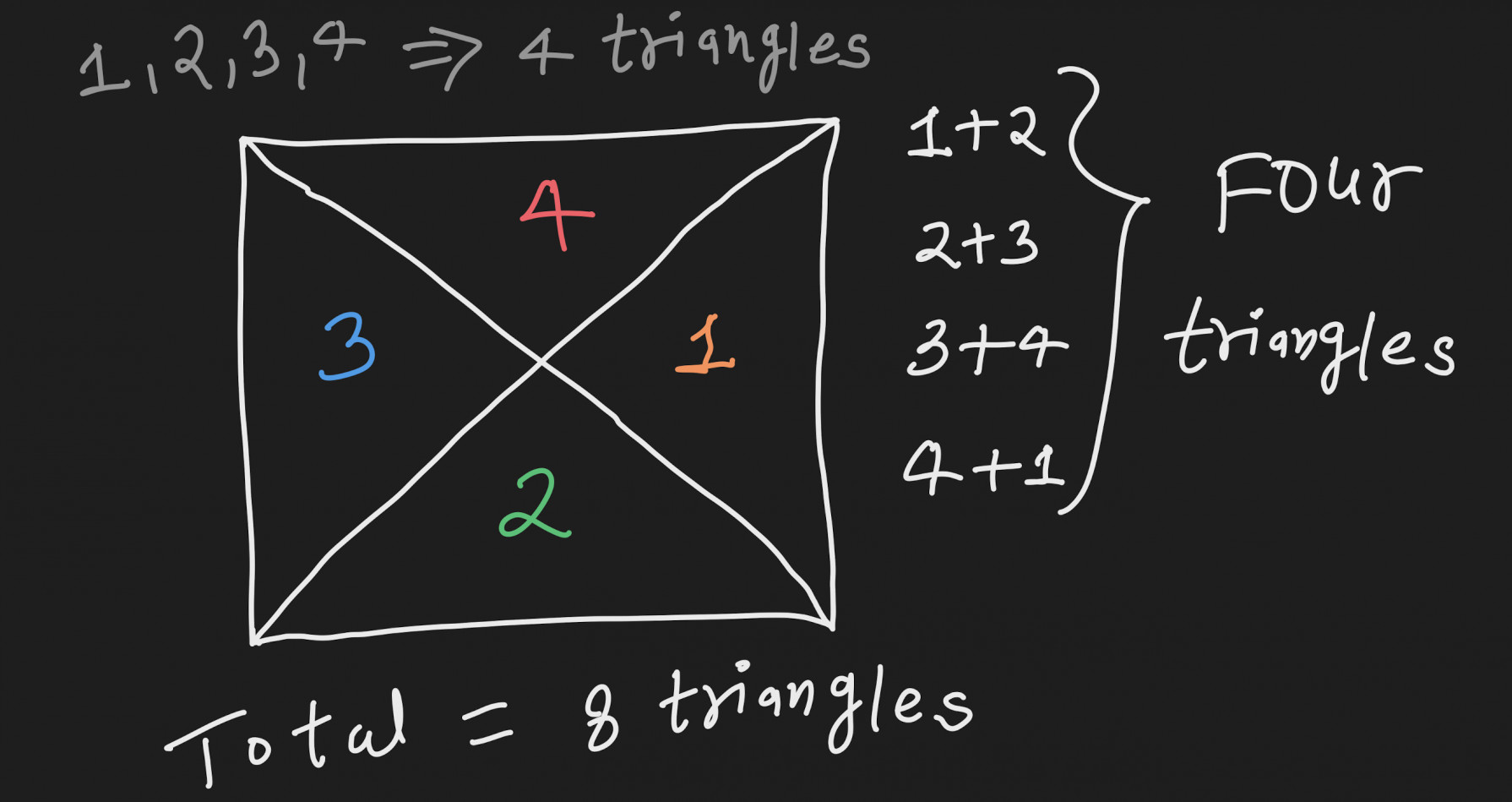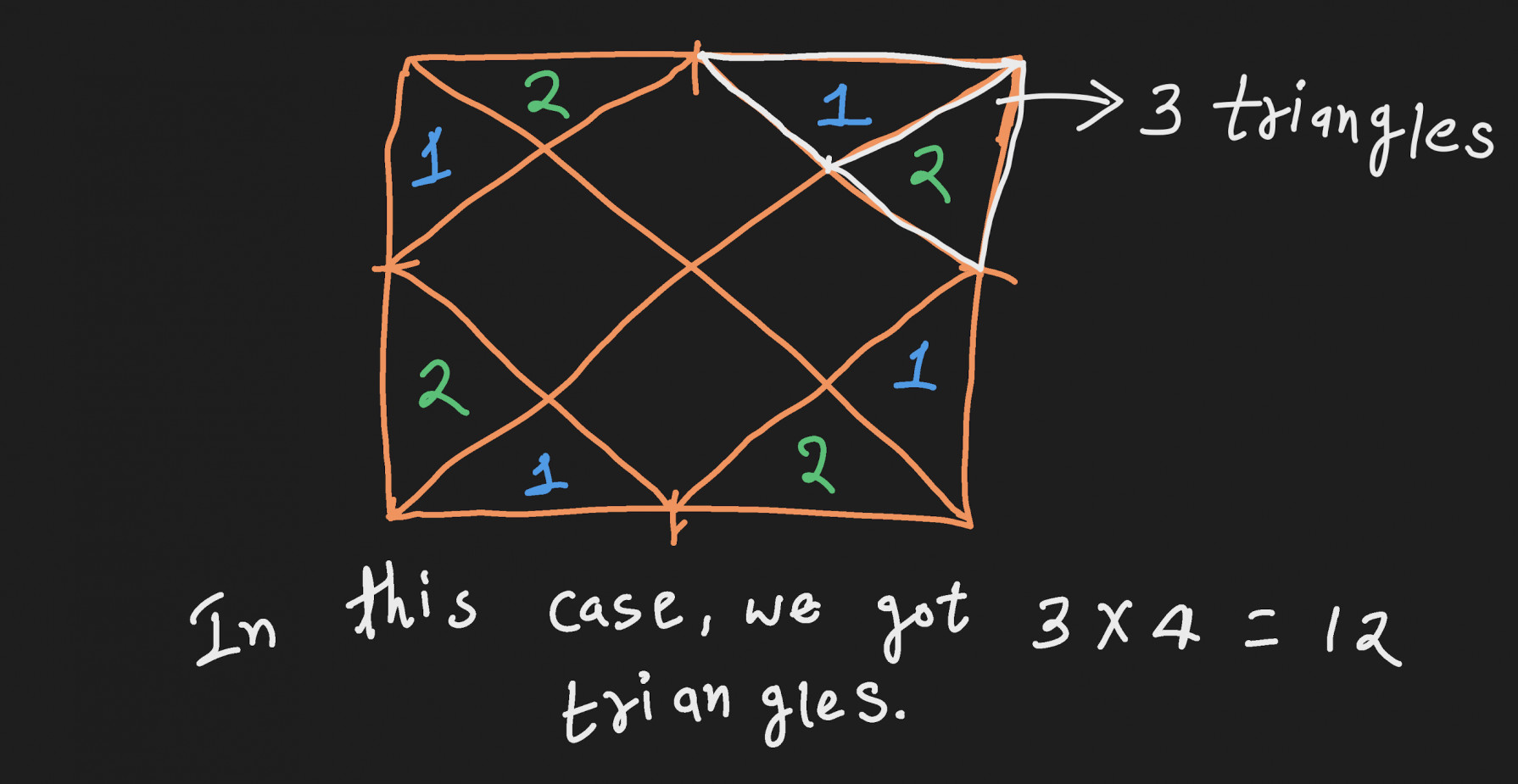We know that,
- All squares are rectangles, but not all rectangles are squares because not all rectangles have all sides of equal length.
Now, we can easily count the number of rectangles.

The number of rectangles in the above figure is:
- $\underbrace{1,2,3,4}_{{\color{Red} {\text{squares}}}} \Rightarrow 4$ rectangles
- $(1+2), (4+3), (1+4), (2+3), \underbrace{(1+2+3+4)}_{{\color{Red}{\text{squares}}}}\Rightarrow 5$ rectangles
- The big ${\color{Red}\text{square}}$ is also a rectangle.
Therefore, the number of rectangles $=10.$
Correct Answer: C
$\textbf{PS:}$ The number of squares $ = 6$
Now, we can calculate the number of triangles, in the given figure:


Therefore, the total number of triangles $=8+12=20.$